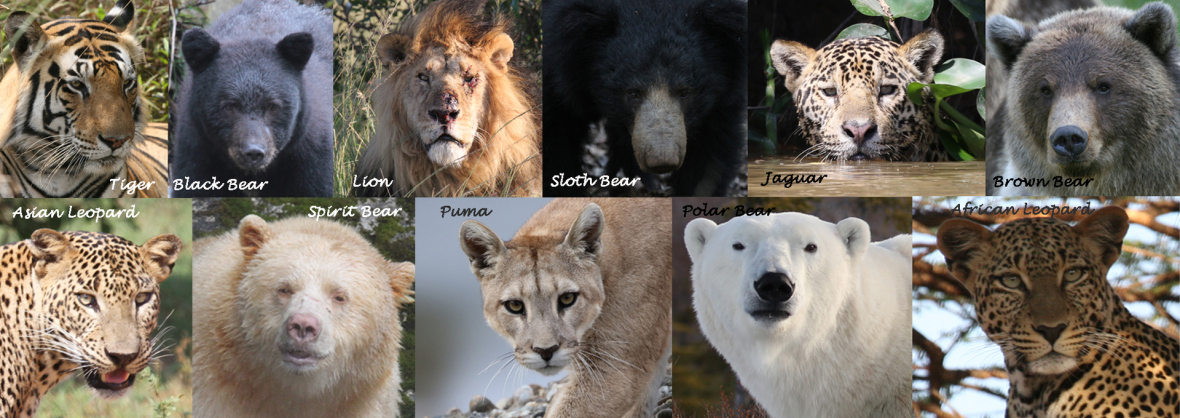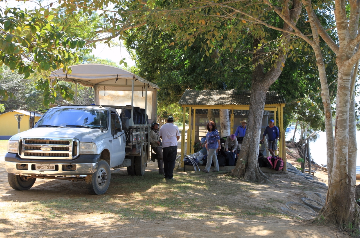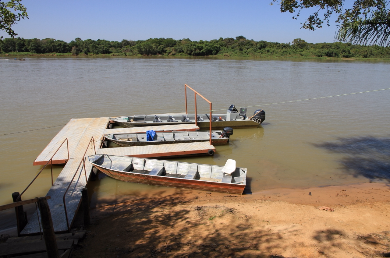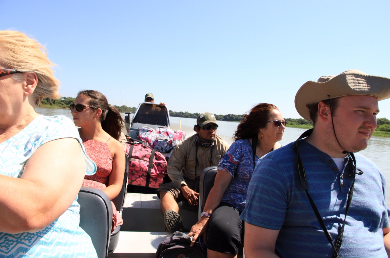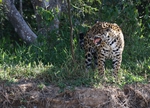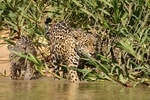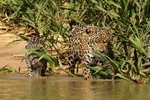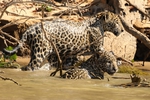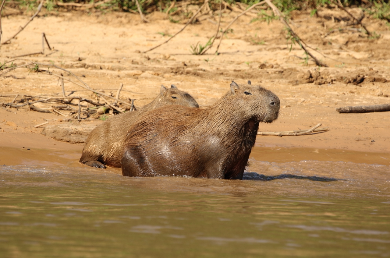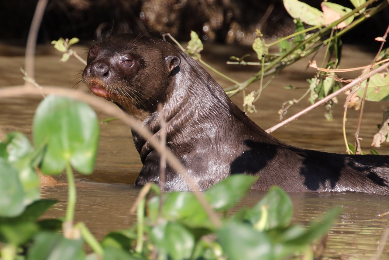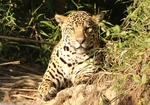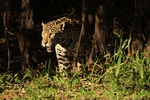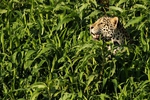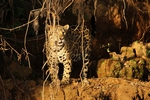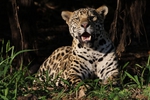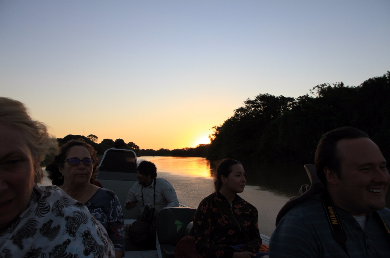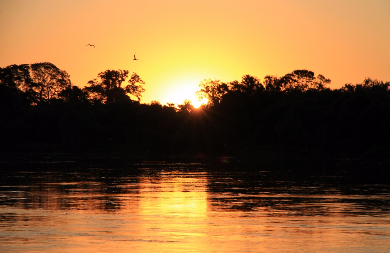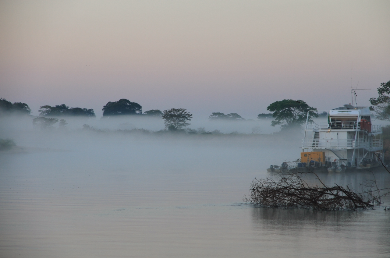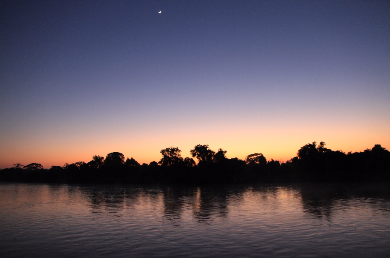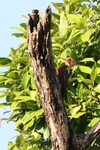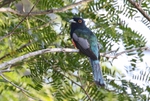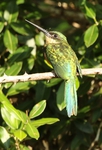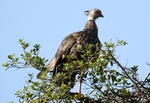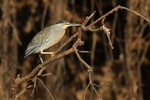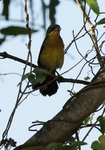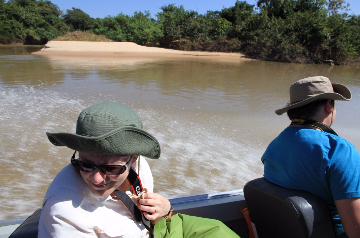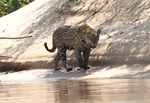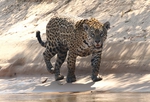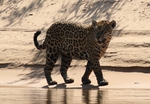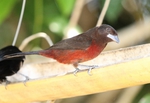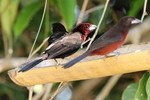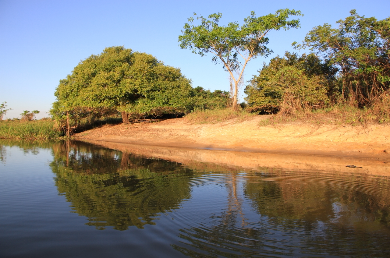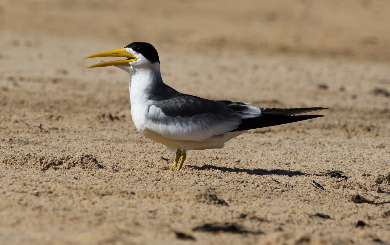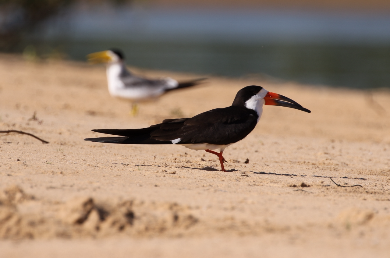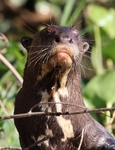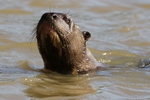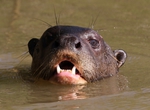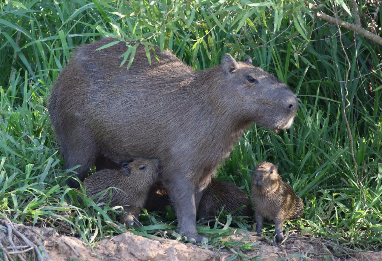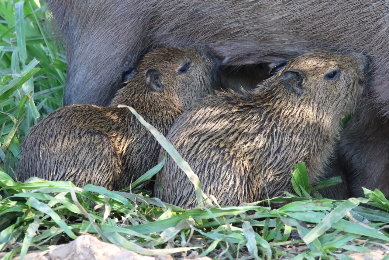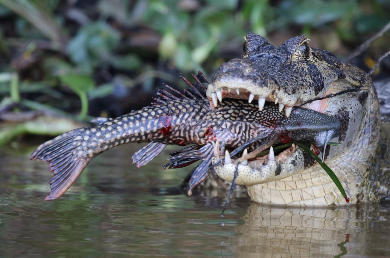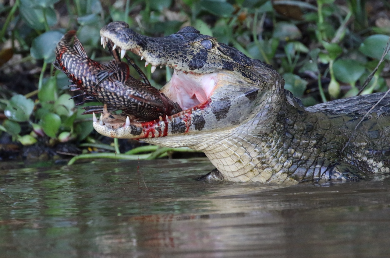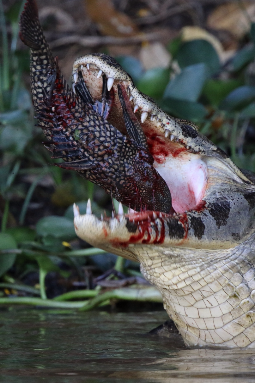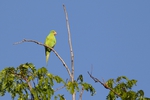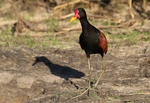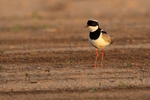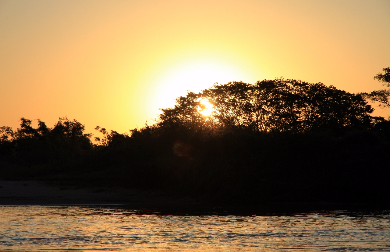SouthWild Jaguar Flotel
A bit about SouthWild Jaguar Flotel - the lodge is anchored near the mouth of the 3 Brothers River, in the centre of the ‘Jaguar Zone’. Morning and afternoon excursions go out between 7am & 11am and 2pm & 6pm in a radio equipped motor boat (to allow the captains to keep each other informed of what has been spotted & where). The Flotel has suites and smaller cabins – a quick read of TripAdvisor will give you feel for the big difference between the two styles of room. Our group was located in the suites so we had spacious rooms with two double beds, each with a mosquito net. There was plenty of desk area to spread out our camera gear and there were plenty of sensibly located power points with two adapters suitable for European & USA style plugs. The shower room was compact, with a small sink & mirror, toilet / bidet and reasonable sized shower, another larger sink & mirror was located in the main room. Meals were served as follows: breakfast 5am to 7am, lunch 11am to 1pm and dinner 6pm to 8pm. All buffet style, the choice was limited and cooking basic, but perfectly edible. Being on a Flotel has its restrictions with there being nowhere to walk during down hours, but as those down hours were very short, it wasn’t really a problem! There were bird feeders at the back of the Flotel hanging in the trees and many birds came to visit them along with some rather large caiman that would rest on the beach almost in touching distance. The Flotel had WiFi which was put under great strain by a group of Americans led by a professional photographer along with Marcos Felix (our originally intended guide). We were fortunate that our suite (number 12) was the closest suite to the WiFi’s route box, so we were able to get a signal in our room, although still slow during the day, it was pretty good in the middle of the night.
